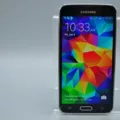Samsung has been a leading player in the smartphone industry for many years, consistently delivering innovative and high-quality devices to its customers. One important aspect of their smartphones is the operating system, particularly the Android version that they use. In recent years, there has been a shift towards 64-bit Android phones, and Samsung has been at the forefront of this transition.
But what exactly does it mean for a smartphone to be 64-bit? In simple terms, it refers to the architecture of the device’s operating system. A 64-bit system can handle larger amounts of data and perform more complex calculations compared to a 32-bit system. This ultimately results in improved performance and capabilities for the smartphone.
So, how can you determine if your Samsung phone is a 64-bit device? Fortunately, there is a simple way to check. Just go to the device settings, navigate to the “About Phone” section, and look for the information about the system architecture. If it mentions “64-bit,” then congratulations, you have a 64-bit Samsung phone!
Now, let’s take a look at some popular Samsung phones that are equipped with 64-bit Android. Please note that this is not an exhaustive list, but it includes some notable devices:
1. Samsung Galaxy S21: The flagship device from Samsung’s Galaxy S series, the S21 features a powerful 64-bit processor, delivering exceptional performance and speed.
2. Samsung Galaxy Note20: The Note20 comes with a 64-bit processor and is known for its productivity features, including the S Pen stylus.
3. Samsung Galaxy A52: This mid-range device offers a 64-bit processor, making it a great option for those looking for a balance between performance and affordability.
4. Samsung Galaxy M31s: The M31s is a budget-friendly smartphone that still packs a punch with its 64-bit processor, ensuring smooth multitasking and gaming experiences.
These are just a few examples of Samsung phones that embrace the 64-bit technology. As Android continues to evolve, we can expect more Samsung devices to join the 64-bit club, offering improved performance and compatibility with the latest apps and software updates.
Samsung has been quick to adopt the 64-bit architecture in its smartphones, allowing users to benefit from enhanced performance and capabilities. If you own a Samsung phone and want to check if it’s 64-bit, simply go to the device settings and look for the system architecture information. And remember, with Samsung’s commitment to innovation, we can expect even more exciting developments in the world of 64-bit Android phones.

Which Android Version is 64-bit?
Android 12 (API level 31) is the Android version that is 64-bit. Prior to Android 12, there were both 32-bit and 64-bit versions available. However, starting from Android 12, all Android Emulator system images are exclusively 64-bit. This means that when developing and testing apps using the Android Emulator, you will need to ensure that your app is compatible with 64-bit architectures.
It’s important to note that this change only applies to the Android Emulator system images and not to physical devices. Physical Android devices can still have both 32-bit and 64-bit versions depending on the device’s hardware and software compatibility.
How Do You Know If Your Android is 64-bit?
To determine if your Android device is 64-bit, you can follow these steps:
1. Go to the “Settings” app on your Android device. This app is usually represented by a gear icon.
2. Scroll down and tap on the “About Phone” or “About Device” option. It is typically located towards the bottom of the Settings menu.
3. Look for the “Processor” or “CPU” section in the About Phone/Device settings.
4. Tap on the Processor/CPU section to view more details about your device’s processor.
5. Look for information related to the architecture or bit version of your device’s processor. It may be mentioned as “Architecture,” “Bit Version,” or “Instruction Set.”
6. If your device is 64-bit, it will display “64-bit” or “ARM64” in the architecture or bit version section. This indicates that your Android device is running on a 64-bit system.
7. If the information states “32-bit” or “ARM,” then your device is 32-bit and not 64-bit.
Alternatively, you can also use third-party apps from the Google Play Store, like “CPU-Z” or “AIDA64,” to check the architecture and bit version of your Android device. These apps provide detailed information about your device’s hardware, including the processor architecture.
What is the Difference Between 32-bit And 64-bit Phones?
The main difference between 32-bit and 64-bit phones lies in the amount of memory (RAM) they can utilize. A 32-bit operating system (OS) can support a maximum of 4GB of RAM, while a 64-bit OS can handle much larger amounts.
To understand why this is the case, let’s break it down a bit further. In computing, bits are the smallest units of information that a computer can process. A 32-bit device uses a 32-bit architecture, which means it can process data in chunks of 32 bits at a time. This architecture limits the addressable memory to 2^32, which is equivalent to 4GB.
On the other hand, a 64-bit device uses a 64-bit architecture, allowing it to process data in chunks of 64 bits. This larger architecture expands the addressable memory to 2^64, which is an astronomical amount that exceeds the needs of most devices currently on the market.
So, what does this mean for users? Well, if you have a device with 4GB of RAM or less, it will likely be running a 32-bit OS. This is sufficient for most everyday tasks such as web browsing, social media, and light gaming. However, if you have a device with more than 4GB of RAM, it will likely be utilizing a 64-bit OS to fully take advantage of the additional memory.
The difference between 32-bit and 64-bit phones lies in the maximum amount of RAM they can support. 32-bit devices have a limit of 4GB, while 64-bit devices can handle larger amounts.
Conclusion
Samsung has been a major player in the smartphone industry for many years, offering a wide range of devices to cater to different user preferences and budgets. They have consistently pushed the boundaries of technology, introducing innovative features and advancements in their devices.
One aspect that sets Samsung apart is their commitment to providing powerful hardware and software capabilities. They have embraced the transition to 64-bit architecture, ensuring that their devices can handle more demanding tasks and take full advantage of the available resources. This allows for smoother multitasking, better performance, and enhanced user experiences.
Furthermore, Samsung’s decision to disable 32-bit support in their devices, such as the Pixel 7, demonstrates their forward-thinking approach. By focusing solely on 64-bit operations, they can optimize their software and make the most out of their powerful hardware components.
Not only does this enable Samsung to stay at the forefront of technological advancements, but it also ensures that their devices are future-proofed. As more applications and software become optimized for 64-bit architecture, Samsung users can continue to enjoy the latest features and functionalities without any limitations.
Samsung’s commitment to 64-bit technology showcases their dedication to providing high-performance devices that can meet the demands of modern users. Whether it’s for gaming, productivity, or multimedia consumption, Samsung smartphones are equipped to deliver exceptional experiences, making them a popular choice among consumers worldwide.













